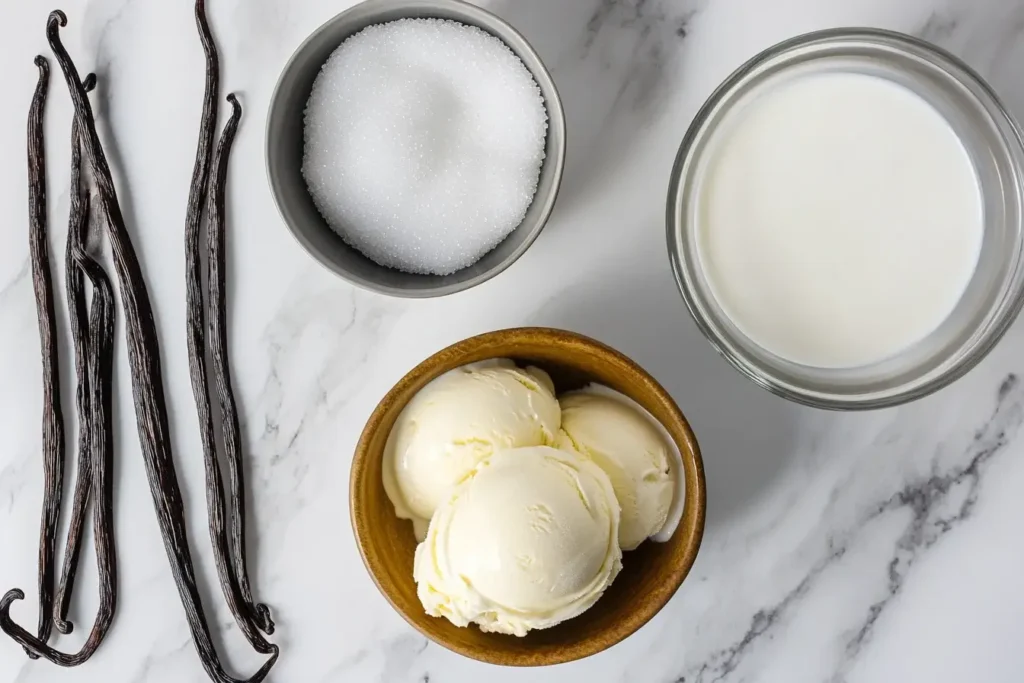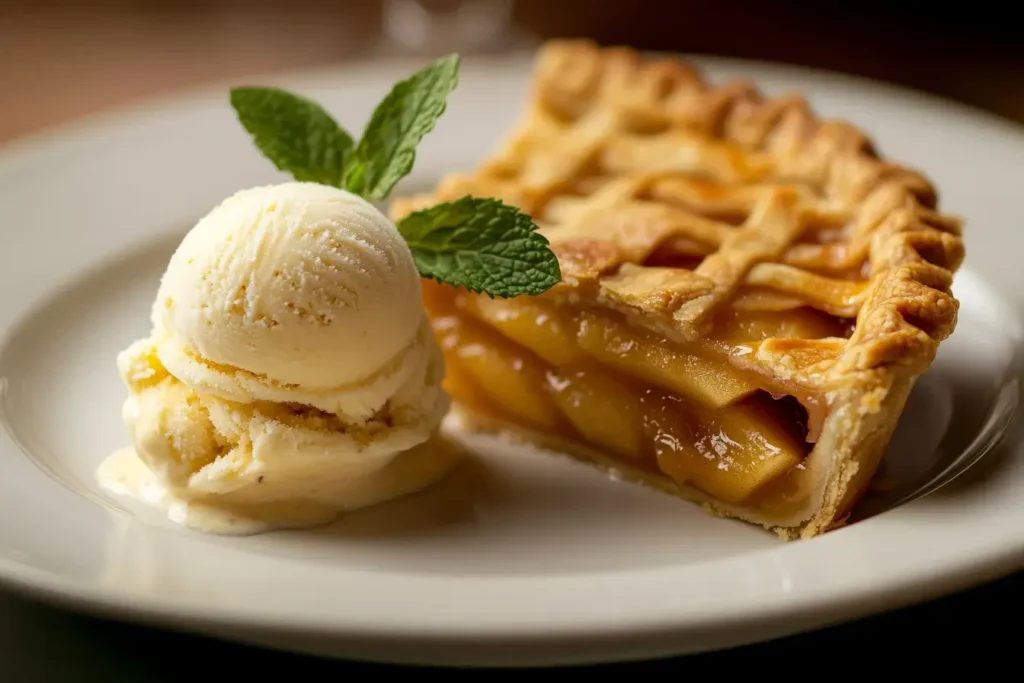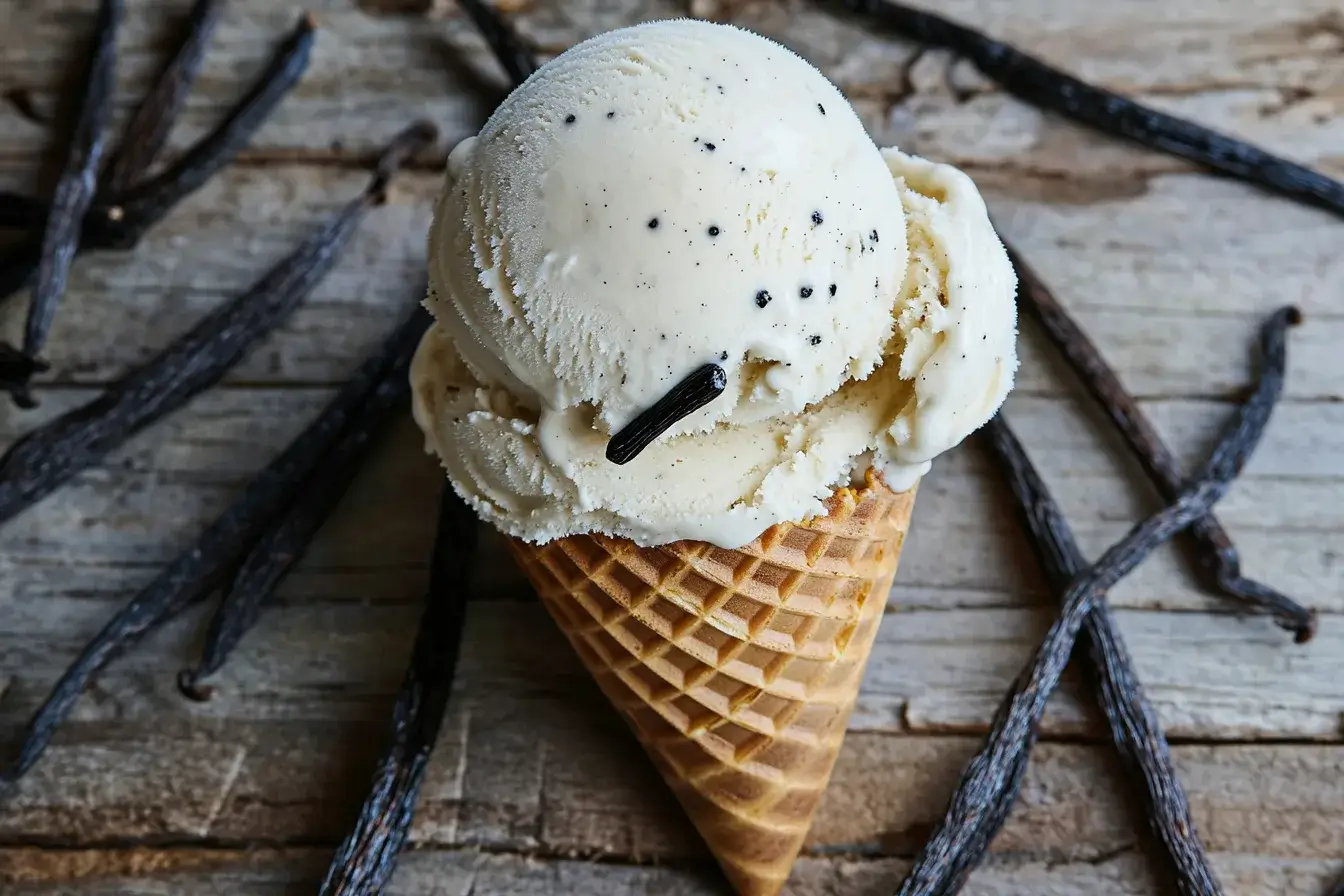It is more than just a dessert—it’s a timeless classic that has graced our tables for generations. With its rich, creamy texture and distinct flavor, this indulgent treat has captured the hearts of dessert lovers everywhere. In this article, we’ll explore its fascinating history, the artistry behind its creation, the top brands worth trying, and even some serving tips. From understanding the difference between real vanilla beans and synthetic flavoring to uncovering its health aspects, this comprehensive guide will cover all you need to know about vanilla bean ice cream. Let’s dive in!
The History and Evolution
The Origins of Vanilla in Desserts
Vanilla has a storied past that dates back to the ancient civilizations of Central America. Indigenous peoples, such as the Totonacs and Aztecs, first cultivated the vanilla orchid, using its aromatic pods to flavor drinks and foods. When Spanish explorers brought vanilla to Europe in the 16th century, it quickly became a prized ingredient. Paired with sugar, another exotic import, vanilla’s versatility flourished.
By the 18th century, ice cream had emerged as a luxury treat, reserved for royalty and the elite. Vanilla soon became a popular flavor, its subtle sweetness complementing the creamy base. Over time, it transitioned from exclusive banquet halls to everyday households, cementing its place as a global favorite.
Vanilla Bean vs. Vanilla Flavoring
What sets vanilla bean ice cream apart from its counterparts? The secret lies in the pod. Real vanilla beans come from the orchid plant and are hand-pollinated, making them labor-intensive and expensive. These pods are filled with tiny black seeds that infuse ice cream with a rich, aromatic taste and a natural speckled appearance.
On the other hand, synthetic vanilla, often labeled as “vanilla flavoring,” is a cost-effective alternative derived from compounds like vanillin. While it mimics the flavor, it lacks the depth and complexity of real vanilla beans. This distinction makes vanilla bean ice cream a premium choice for those who crave authenticity.
Understanding the Ingredients
Core Ingredients and Their Importance
It is a delightful mix of simplicity and sophistication. At its heart are cream and milk, which lend the dessert its velvety texture. These dairy elements provide the luscious creaminess that makes each bite feel indulgent. Sweetened with sugar, they create the perfect base for the hero ingredient—vanilla beans.
Vanilla beans are prized for their aromatic and complex flavor profile. The seeds inside the pods contain compounds like vanillin, which provide that unmistakable, floral sweetness. These tiny flecks not only enhance the taste but also add an artisan touch that distinguishes vanilla bean ice cream from its plain vanilla counterparts.

The Role of Stabilizers and Additives
While traditional recipes focus on natural ingredients, many commercial brands incorporate stabilizers like guar gum or carrageenan. These additives prevent ice crystal formation, ensuring the ice cream stays creamy even after multiple trips in and out of the freezer.
However, the difference between artisanal ice cream and mass-produced versions often lies in the quality of these ingredients. Artisanal brands tend to skip synthetic additives, letting the natural richness of the vanilla and dairy shine through.
How Vanilla Bean Ice Cream is Made
The Traditional Ice Cream Making Process
Crafting vanilla bean ice cream begins with making a custard base. This involves heating cream, milk, sugar, and egg yolks until they thicken into a rich mixture. The vanilla bean pods are split open, and their seeds are scraped out and stirred into the custard. The pods themselves are often steeped in the mixture to maximize flavor extraction.
Once the custard cools, it’s churned in an ice cream maker. Churning is crucial because it incorporates air, giving the ice cream its characteristic light and fluffy texture.
Modern Innovations in Ice Cream Production
In commercial settings, advanced machinery accelerates the freezing process, which helps minimize the formation of ice crystals. Some brands use nitrogen or high-pressure homogenization to achieve ultra-smooth textures. Additionally, sustainable practices, such as sourcing organic vanilla beans and reducing energy consumption during production, are becoming popular.
For further inspiration, explore homemade dessert recipes to pair with your ice cream.
Serving Suggestions and Pairings
Classic Pairings with Vanilla Bean Ice Cream
One of the best things about vanilla bean ice cream is its versatility. It complements an array of desserts, from warm apple pies to fudgy brownies. The creamy texture and sweet, aromatic flavor balance out the richness of baked goods, making it an essential addition to dessert plates.
Fresh fruits, such as strawberries, peaches, and mangoes, are also wonderful companions. Their natural sweetness and acidity cut through the creaminess, creating a refreshing contrast.

Creative Recipes Featuring Vanilla Bean Ice Cream
For a creative twist, try incorporating vanilla bean ice cream into new recipes. Blend it with milk and a splash of vanilla extract for a classic milkshake, or layer it with cookies and whipped cream for a decadent icebox cake.
If you’re in the mood for something indulgent, drizzle melted chocolate over a scoop and sprinkle with toasted nuts. Looking for inspiration? For more unique ways to enjoy this creamy treat, check out other creative recipes on FlavorMenus.
The Health Aspects of Vanilla Bean Ice Cream
Nutritional Breakdown
Like most desserts, vanilla bean ice cream is a treat best enjoyed in moderation. A typical serving includes a mix of essential nutrients and indulgent ingredients. It provides a good dose of calcium and vitamin D from the dairy but is also rich in sugar and fat, contributing to its creamy texture.
A standard half-cup serving contains about 200 calories, 10 grams of fat, and around 20 grams of sugar. While it can satisfy a sweet tooth, the high sugar content means it’s not an everyday food if you’re watching your diet. Opting for low-fat or reduced-sugar versions can help cut down on calories without sacrificing too much flavor.
Tips for Enjoying in Moderation
Balancing indulgence with mindfulness can make all the difference. Start by sticking to smaller portions—savoring a few bites can be just as satisfying as a full bowl. Pairing vanilla bean ice cream with fresh fruit can add natural sweetness and fiber, making your dessert more wholesome.
If you’re making ice cream at home, try using natural sweeteners like honey or maple syrup. Alternatively, experiment with non-dairy bases for a lighter option. These tweaks can help you enjoy your favorite treat guilt-free.
Popular Alternatives to Vanilla Bean Ice Cream
Dairy-Free Vanilla Bean Options
For those with dietary restrictions, dairy-free vanilla bean ice cream offers a delicious alternative. These versions use plant-based milks like almond, coconut, or oat milk as their base. They often include coconut cream or cashew butter to mimic the creamy texture of traditional ice cream. Despite being dairy-free, many brands still use real vanilla beans to retain the rich flavor and signature specks.
Popular choices include brands like So Delicious and NadaMoo!, both of which have perfected the art of crafting non-dairy ice cream. These alternatives are also lower in cholesterol, making them a heart-healthier choice for those watching their intake.
Low-Calorie and Protein-Rich Variants
If you’re counting calories, low-calorie vanilla bean ice cream might be the perfect pick. Brands like Halo Top and Arctic Zero have created lighter versions that keep the flavor intact while slashing sugar and fat. These options often rely on sugar substitutes like erythritol or stevia, making them suitable for those monitoring their sugar intake.
Protein-packed ice creams have also surged in popularity. These varieties include added whey or pea protein to turn your dessert into a post-workout snack. While the texture might differ slightly, they still deliver on the classic vanilla bean taste.
Creative Ways to Use Vanilla Bean Ice Cream
Transforming Desserts with Vanilla Bean Ice Cream
It is more than just a standalone treat—it’s a game-changer in desserts. Add a scoop to warm cobblers or pies for a comforting contrast of hot and cold. For a playful twist, use it to make affogato by pouring hot espresso over a generous serving of ice cream.
Want something more elaborate? Layer it between cookies or brownies to create ice cream sandwiches that are perfect for summer gatherings. Its versatility ensures it can elevate any sweet creation.
Drinks and Cocktails Featuring Vanilla Bean Ice Cream
Beyond desserts, vanilla bean ice cream can enhance beverages. Blend it with root beer for a nostalgic float or whip it into milkshakes for a creamy, frothy delight. For adults, it pairs beautifully with liquor—think creamy vanilla cocktails made with Bailey’s or Kahlua.
Experimenting with different pairings can uncover surprising flavors. Whether you’re creating a simple treat or an elaborate drink, vanilla bean ice cream offers endless possibilities.
For more fun ways to use ice cream in desserts and drinks, explore the creative recipes on FlavorMenus.
Frequently Asked Questions About Vanilla Ice Cream
What Makes it Different From Regular ?
The key difference lies in the use of real vanilla beans. While regular vanilla ice cream typically uses vanilla extract, vanilla bean ice cream incorporates the seeds from the vanilla pod, which enhances both the flavor and appearance. The visible black specks are a signature feature that indicates the use of authentic vanilla beans.
Can I Substitute Vanilla Extract for Vanilla Beans in Recipes?
Yes, you can substitute vanilla extract for vanilla beans in recipes, but the flavor may not be as robust or complex. If you’re aiming for the distinctive taste of vanilla bean ice cream, it’s worth investing in whole vanilla pods. However, a high-quality vanilla extract can still deliver a delicious result.
Why Do Some Vanilla Bean Ice Creams Have Visible Black Specks?
The black specks in vanilla bean ice cream come from the seeds inside the vanilla pods. These tiny flecks are a sign of real vanilla beans, adding authenticity and depth to the flavor. However, some brands may use imitation specks for visual appeal without offering the genuine taste of vanilla.
For more dessert tips and ideas, explore FlavorMenus’ recipes.
Conclusion and Final Tip
Vanilla bean ice cream is more than a dessert—it’s a timeless classic that transcends seasons and occasions. Its rich history, authentic flavor, and versatility make it a staple in homes and gourmet kitchens alike. Whether you savor it as a standalone treat, pair it with your favorite desserts, or experiment with creative recipes, this creamy delight never disappoints.
Final Tip: When selecting vanilla bean ice cream, always check the ingredient list for real vanilla beans to ensure you’re getting the authentic flavor. Better yet, try making your own at home for a truly personalized experience! The effort will reward you with unparalleled freshness and a deeper appreciation for this beloved classic. Enjoy!

